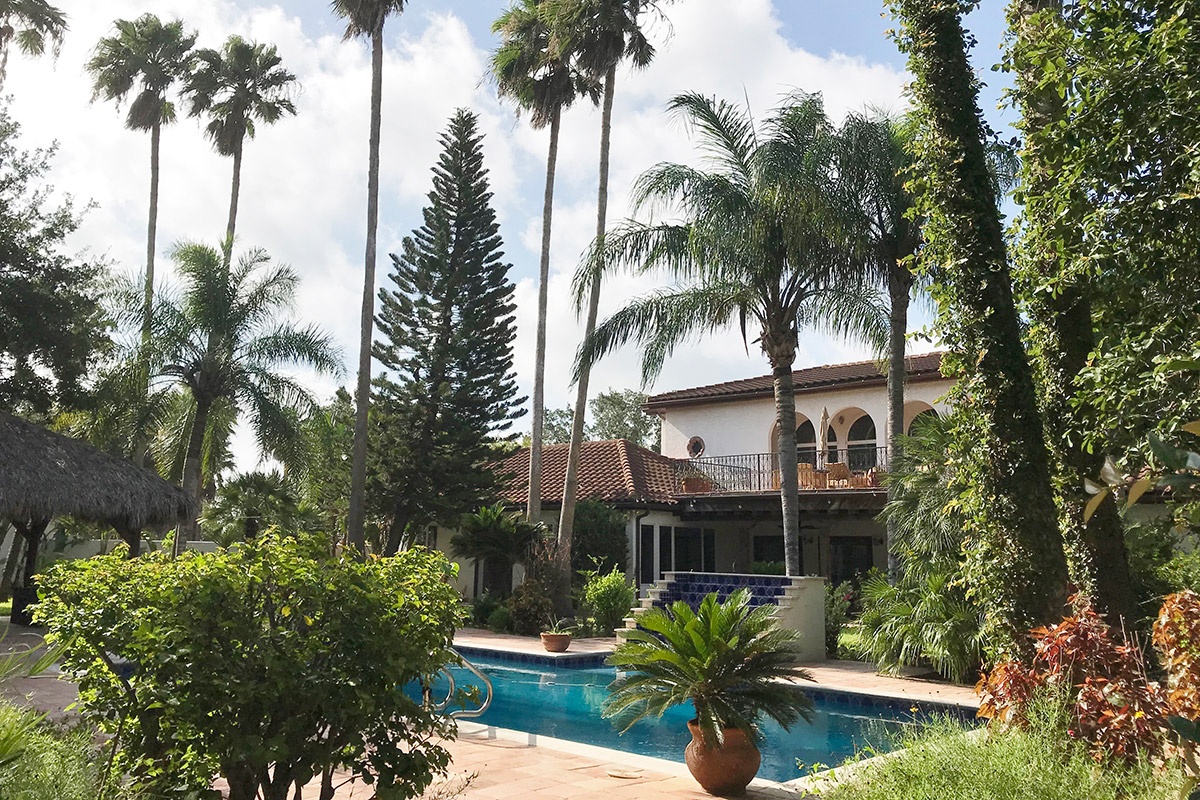Hilltop Gardens, an oasis of lush greenery on what passes for a hill in the Valley, offers relief from the sun and heat. That’s fitting since the garden’s 200-plus species of aloe plants are famous for offering ‘relief in a leaf.’ The medicinal use of aloe for burns and wounds dates back almost 4,000 years.
Near the Willacy-Hidalgo County line west of Lyford, Hilltop Gardens was established on 100 acres in 1939 by Lee and Sherman Ewald, who pioneered growing aloe vera (Aloe barbadensis) commercially in the RGV and nationally. Their daughter, a chemist, was the first person to add aloe vera to cosmetics. The Texas State Historical marker at the entrance tells the story.
Today, Hilltop includes the nation’s largest aloe garden, sensory gardens, healing gardens and a children’s garden, which are open to the public, as well as a 720-acre certified organic farm which produces leafy vegetables and aloe.
From FM 291 turn onto Lee Lane and follow the line of towering palms to the Visitor Center. The Gardens’ gate opens into a luxuriant, relaxing sanctuary with paved paths. My eyes flit between the contrasting colors and shapes of flowers, butterflies, leaves: blue plumbago, flamboyant shaving brush trees, queen butterflies. I ring the small temple bell hung on a bamboo frame over a circular garden, adding background music to the white wing doves’ call: who-cooks-for-you.
At the Visitor Center I pick up the self-guided tour directions that come with the $3 admission fee. Later I can watch the videos about the history of Hilltop Gardens, aloe farming and organic farming.
The sheer abundance of plants overwhelms visitors. “We put in a lot of work to get it looking like it does,” Andy Cruz, farm and garden manager, tells me. I’m grateful for the signage that tells about the plants and where they come from.
In the Aloe Memorial Garden, some aloes are tall, others sprawl. The variety is astounding: curly leaves, zebra-striped leaves, and the deep coral leaves of the mustache aloe. Two-thirds of the world’s aloes are planted here with wonderfully descriptive names: spiny aloe, dune aloe, tiger tooth aloe (exceptionally sharp leaves), red hot poker aloe, jackal’s tail. The flowering succulents all come from Africa: Ethiopia, Zambia and Zimbabwe, along with Kenya South Africa and Madagascar. Mounded behind short bamboo retaining walls, the aloes coexist with retama, crepe myrtle, and Caribbean Sea grape trees that shade the benches along the gravel path.
Stepping into the Sensory Gardens activates all your senses. Listen to the wind shaking the bamboo, salt cedars and wind chimes. The hum of cicadas reminds you of lazy summer afternoons and tranquility. Breathe in the fragrances of citronella and jasmine. Run your hand over crepe myrtle’s smooth bark and anacua’s sandpapery leaves, but don’t touch the sharp, polished thorns on the kapok trunk. Tastes from the guava, pomegranate and fig trees and the pineapple. I spot senna bush leaves that look like someone with a paper punch has attacked them, but it wasn’t someone: leaf cutter bees have cut out half circles to use as nests for their eggs.
A shallow reflecting pool centers the Healing Garden, where golden shower trees and travelers palms lean over planters of medical herbs: rosemary, yerbabuena, basil, lavender and eye bane. A shady niche offers a haven amid orange-flowered royal poincianas and birds of paradise flaunting their colors.
I walk through the maze as it spirals upwards and catch the breeze as a reward. Stepping stones lead me to a water feature flowing under esperanza and variegated hibiscus. Koi cruise between rocks and lily pads and tiny gambusia fish eating mosquito larvae. The Children’s Garden has a multi-story wood climbing and hiding structures complete with a mini zip line over sand. A quick peek inside Hilltop’s lushly landscaped, hacienda-style inn makes me feel like I’ve escaped to an exotic, private getaway.
Bring your lunch and picnic on the patio. The gardens offer great birding and glimpses of other creatures too, like the very large, carnivorous cane toad sitting under a sabal palm, waiting for a snack.
Open: Monday – Friday from 9:00 a.m. to 4:00 p.m.
Visit: hilltopgardens.com


